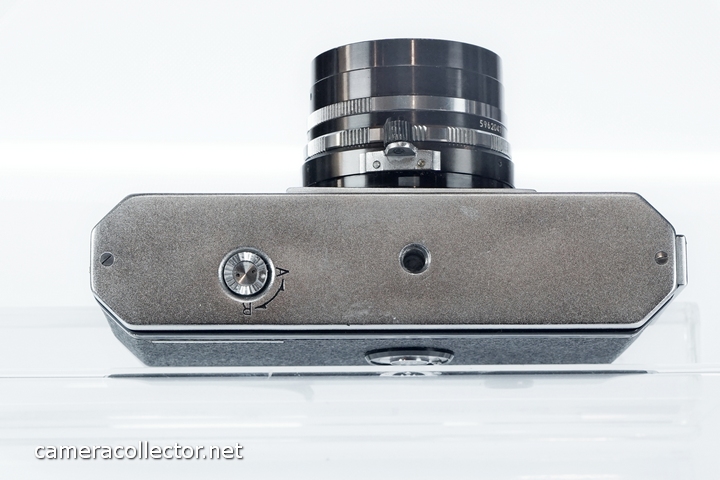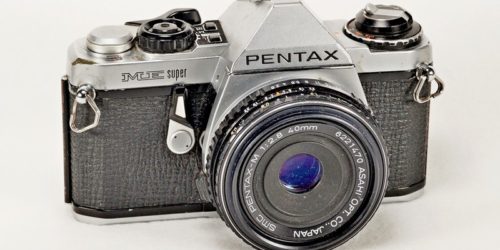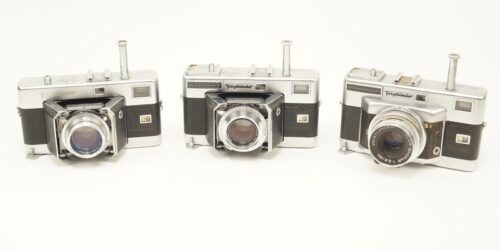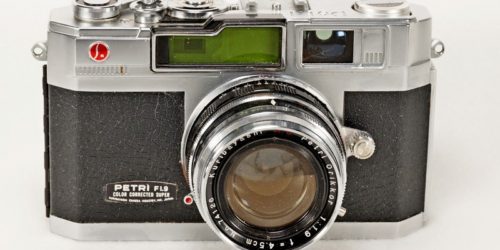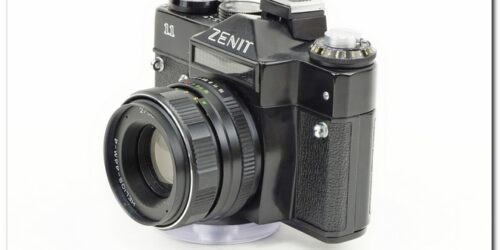Yashica YK
Yashica YK
Yashima, the forefather of Yashica, was established as a machine shop towards the end of WWII. Once the war was over, it shifted its focus to consumer goods and further began producing TLR cameras in the early 1950s. The first two models were Yashimaflex and Pigeonflex, and the Yashica name, short for Yashima Camera, was first seen in 1954.
In 1958, Yashima acquired Nicca, a company that produced high-end Leica copies. Making Leica clones appears to have been a popular in post-war Japan, with Canon, Leotax, Look, Meguro, Tanaka, and others busy copying pre-war Leica models.
The first Yashima rangefinder cameras, the YE, YF, YK and YL, were based on Nicca models.
- The YE was a Leica-derived model, a rebirth of the Nitcca 3F. An interchangeable lens.
- The YF was a step back, as a simpler model. An interchangeable lens.
- The YK and YL were offered as mass-market models. Fixed lenses.
The first two models see today’s collector interest, where the YK and YL are frowned upon. The Yashica 35, a Yashica-owned design somewhat inspired by the Zeiss Contax, was presented in 1959. All five models appeared within a short period, and the series did not continue with similar models. Instead, Yashica had offered the M, J, Minister, and Lynx rangefinder models and their descendants, and a decade later came the famed Electro 35 line, perhaps the most popular Yashica product.
In 1983, the company was acquired by Kyocera, an industrial chemical conglomerate, and continued to produce point-and-shoot and high-end professional models under the CONTAX name, which was so spelled to differentiate it from the original Zeiss Contax. Today, somehow late, they tiptoe into digital models, against major competition from early starters.
The Yashica YK is styled in a mix of the Leica’s soft lines and the Contax’s hard, military lines. It appears that these design elements were employed by most camera makers of that era; see recently viewed models by Beauty, Walz, and Aires, amongst others.
The camera body is streamlined, with no bumps or steps. It is well-finished, with an appearance that stood well against the burden of time. Regretably, the camera I got had a dual personality. The winder is buttery smooth, and the shutter clicks eagerly, but on the lens assembly, all three dials were stiff, as in stuck. After a good dose of injected lighter fuel, the aperture and shutter dials came back to life, but the focusing ring was still stubborn. Here, this ring’s surface is smooth, unlike the serrated surfaces in other models, so the only way to move it was by pushing on the finger rest. So on that I pushed, just to have it crack and fall off. Either I have a mighty thumb, or there was a soft spot. It is still stuck. It is a sad, but not a significant loss, as I had acquired this camera for a mere $14.
- The camera is straightforward to use, with no hidden or mysterious features. No battery required, just set the dials and shoot.
- The top has a manual reset frame counter embedded in the winder base, a cold accessory shoe and a fold-down rewind crank.
- The viewer is on the small side, too small to be practical. The patch is too bright to be functional. There is no parallax frame.
- The ring closest to the body is the focusing dial, marked in feet, to suit the target market. As mentioned above, it is smooth, so it is easy to use with the finger rest. The next ring is the aperture setting, thankfully with some serrated areas. At the front is the shutter speed dial, which is also easy to purchase.
- No self-timer or sync selector.
- The lens is a modest Yashinon 2.8/45, typical of cameras of this class at that time.
- The hinged back exposes a common Japanese film chamber, well-machined film track, double cogs to guide the film and a back-mounted pressure plate. The customary guide roller is missing on this model. A film memo disk is mounted on the right back.
For the collector or shooter, it is a basic camera with no significance or exceptional features. If it comes easily, take it. No special efforts are recommended.
| Camdex list number | 3585 |
| Brand | Yashica |
| Model | YK |
| Manual | Butkus |
| Value | At camdex.ca |
| Format | 35mm |
| Introduced | 1959 |
| AKA | |
| Country | Japan |
| Qty made | |
| Initial price | 40 |
| Currency | USD |
| Type | Rangefinder |
| Body material | Metal |
| Mode | Manual |
| Weight | 700 gr, Body with lens |
| Class average weight | 640 gr, Body with lens |
| ASA range | N/A |
| Kit lens | 2.8/45 |
| Lens make | Yashinon |
| Filter size | 45mm |
| Lens mount | Fixed lens |
| Mount size | N/A |
| Aperture | |
| Shutter | Leaf |
| Shutter make | Copal |
| Trigger | On top |
| Winder | Lever |
| Shutter cocking | Winder |
| Light meter | None |
| Lock | No |
| Speeds | B, 1-300 |
| Mirror | N/A |
| Viewer | Coupled rangefinder |
| DOF preview | No |
| Exposure lock | No |
| Exposure compensation | No |
| Shoe | Cold |
| External sync | Yes |
| Sync speed | |
| Timer | No |
| Battery, original | N/A |
| Battery, replacement | N/A |
| Battery voltage | N/A |
| Integral flash | None |
| Other | |
| More | Hank Kelner Yashica boards |
| Service / repair links | See camerlog.com |







